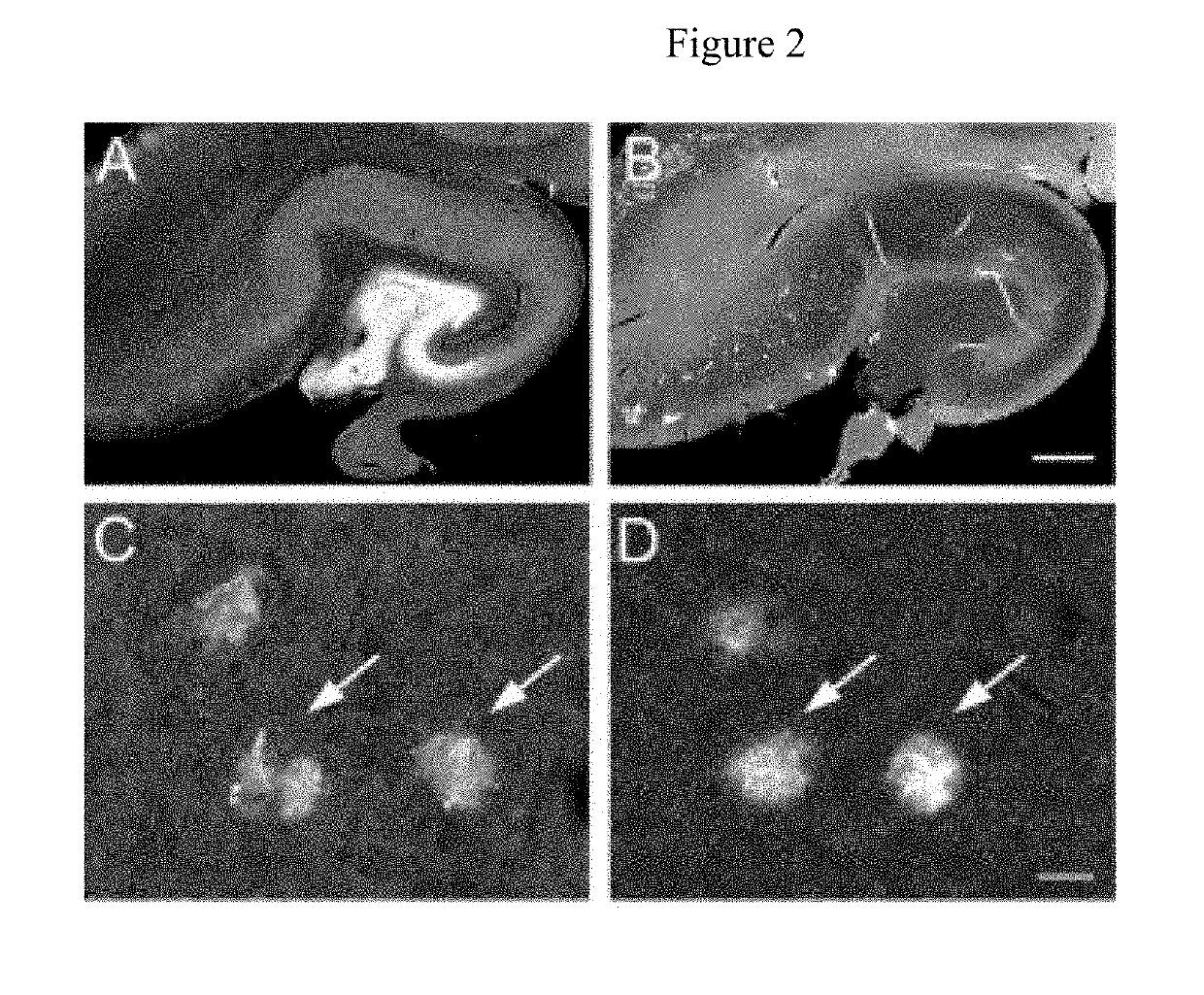Identification of granins as the pathogenic factor of alzheimer's disease and compositions and methods for inhibiting granin aggregation and treating alzheimer's disease
a technology of pathogenic factor and granin, which is applied in the direction of drug composition, peptide/protein ingredient, nervous disorder, etc., can solve the problems of human helplessness exposed to this deadly disease, no remedy, no promising drugs, etc., and achieve the effect of reducing or inhibiting cell toxicity
- Summary
- Abstract
- Description
- Claims
- Application Information
AI Technical Summary
Benefits of technology
Problems solved by technology
Method used
Image
Examples
example 1
Aggregation of Granins Upon Metal Ion Binding
[0111]Experiments were performed to test the effect of metals, in particular Cu2+, Zn2+, and Fe2+, on the aggregation of granins.
Materials and Methods
[0112]Materials: The major granin proteins, chromogranin A (CGA), chromogranin B (CGB), and secretogranin II (SgII) were purified from secretory granules of bovine adrenal medulla as described (Park et al., 2002; Yoo, 1995; Yoo and Albanesi, 1990). Chelex 100 was from Bio-Rad (U.S.A), and other chemicals were of highest purity that is commercially available. Purified native chromogranin B (c), secretogranin II (d), and chromogranin A (b) are illustrated in FIG. 4. The flavonoids, stilbenoids, and the other test compounds used in the present experiments were obtained from MedChem Express (U.S.A.), Sigma-Aldrich (U.S.A.), and Santa-Cruz Biotech. (U.S.A.), and the purity of all the compounds tested was 98% or higher.
[0113]Aggregation Experiments: Prior to aggregation studies, it is necessary to...
example 2
Hydrodynamic Studies of Granins
[0118]Molecular dynamic light scattering: To determine whether granins are in a monomer-to-oligomer state or in high molecular weight aggregate states in different solution conditions, dynamic light scattering experiments of granins were carried out with a DynaPro NanoStar of Wyatt Technology (Santa Barbara, Calif.) at 24° C., and the results were analyzed by a program (Dynamics 7.5.0) provided by the company.
[0119]FIG. 28. Shows the distribution profile of hydrodynamic state of chromogranin B in the presence of baicalein, one of the flavonoids, and Fe2+. The distribution profile of hydrodynamic state of metal-induced granin aggregation was determined with chromogranin B (0.5 mg / ml) (6 μM) in the presence of 0.2 mM baicalein and 0.2 mM Fe2+ using dynamic light scattering method at pH 7.4. Quite remarkably the vast majority of chromogranin B (94.7%) remained in low molecular weight oligomer state and only a small portion (5.3%) stayed in large aggregate...
example 3
[0120]In these experiments, selected compounds and agents were applied to the rats to test the effectiveness of these molecules as the therapeutics agents in the granin-induced Alzheimer's Disease (AD) pathogenesis. The compounds tested included flavonoids, stilbenoids, and others.
[0121]MTT cell toxicity assay: Cell toxicity assays were done using MTT cell proliferation assay kits from Invitrogen (U.S.A.) and 50,000 PC12 cells / well as described (Cheruvara et al., 2015; Shearman et al., 1994). The assays are designed to detect the level of MTT dye reduction by cells, and the resulting color changes at 570 nm are used as an indicator of cell viability (health). The healthier the cells the higher the color changes.
[0122]FIG. 50. Shows cell toxicity of each granin in the presence of 20 μM Cu2+ and 1 μM toxicity inhibitor luteolin. The cell toxicity of each granin (0.1 μM chromogranin A, 0.06 μM chromogranin B, and 0.07 μM secretogranin II) in the presence of 20 μM C...
PUM
| Property | Measurement | Unit |
|---|---|---|
| pH | aaaaa | aaaaa |
| concentrations | aaaaa | aaaaa |
| depth | aaaaa | aaaaa |
Abstract
Description
Claims
Application Information
 Login to View More
Login to View More - R&D
- Intellectual Property
- Life Sciences
- Materials
- Tech Scout
- Unparalleled Data Quality
- Higher Quality Content
- 60% Fewer Hallucinations
Browse by: Latest US Patents, China's latest patents, Technical Efficacy Thesaurus, Application Domain, Technology Topic, Popular Technical Reports.
© 2025 PatSnap. All rights reserved.Legal|Privacy policy|Modern Slavery Act Transparency Statement|Sitemap|About US| Contact US: help@patsnap.com



